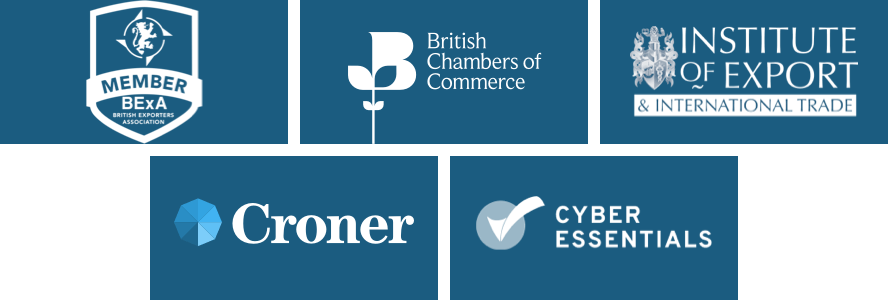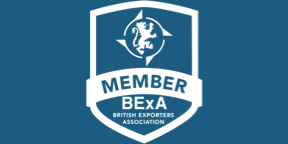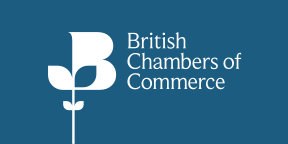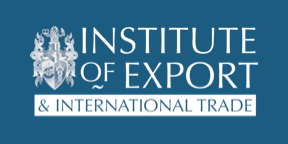How to.... Move Goods Temporarily (Part Two)
BY:
Sandra Strong
2 November 2021
SHARE:

Moving Goods Temporarily - One of the challenges facing businesses is how to be compliant with customs procedures and yet not incur duties and taxes when moving goods internationally on a temporary basis.
Introduction
One of the challenges facing businesses is how to be compliant with customs procedures and yet not incur duties and taxes when moving goods internationally on a temporary basis. In this and the next How to … article we will be looking at the steps to take to manage this part of your business. Part 1 looked at the movement of goods when they will be returned unchanged, so covering goods going to an exhibition, demonstration or for evaluation for example. Here we will review the different procedures available when you move goods for a process, such as repacking or repair.
Why is it important?
Since the UK left the Customs Union of the EU (1-01-2021) the number of temporary movements requiring customs declarations has increased significantly and sadly a lot of companies are not prepared for these changes and have incurred delays, rejected arrivals and/or high customs costs. Temporary movements include the movement of goods for a process, whether the process is a simple one, such as repacking, or to repair or overhaul an item through to the supply of materials and components to an overseas manufacturer. The aim is to legally avoid paying duties and taxes on goods being imported for a process and returned after process. As far as customs authorities are concerned these are new arrivals, unless you have an authorisation and evidence that the goods moved under a customs special procedure that permits the suspension or waiver of duties. Until the end of December 2020, UK shipments to and from the EU didn’t require special customs procedures because of the EU Customs Union permitting free circulation of goods. It’s seems that a lot of businesses are still unsure of what they should be doing instead.
But what is it?
As we discussed in Part 1, customs duties and taxes are used, not only to increase a country’s revenue, but also to control the import of foreign origin goods. The reason the goods are being imported is not taken into consideration unless the importer has an authorisation to use a special procedure. Just saying on your paperwork – “goods sent for repair” – will not magically avoid duties and taxes. It’s all about knowing what your business does internationally, having goods customs controls and managing the declarations made to customs at both export and import.
Internationally, the World Trade Organisation (WTO) requires member countries to have a customs scheme to permit the temporary import and return of goods that have been exported for process in another country without the payment of duties. Within the WTO Revised Kyoto Convention (RKC) this is known as Outward Processing (OP) and Inward Processing (IP) and most countries call it this in their national customs procedures – one exception being the USA, who, though they do have procedures for processing goods it isn’t call OP and IP but relies on using Temporary Import Bonds (TIBs) and Chapter 98 codes. But the principle is the same. A company obtains customs approval, generally in advance of the movement of goods, to send and receive goods for processing. The approval means import customs duties are suspended (when goods imported to process) or waived (when goods are returned after process). Let’s review how this works in practice.
How does it work?
We need to divide the movement of goods for process into two parts:
1.
The sender of the goods for process (Outward Processing)
The sender (exporter) needs approval to export goods to be processed in another country (Outward Processing) if they want to bring the processed item back into the country without paying import duties and taxes. Therefore, Outward Processing is an authorisation to export one thing and bring back the processed item. This could be something that hasn’t fundamentally changed – it has been repacked, repaired, or upgraded – or something significantly changed, such as rolls of fabric reimported as garments. On return of the processed item the authorisation and evidence of export is required, and duty/taxes can be waived.
2. The receiver of the goods doing the process (Inward Processing)
The receiver (importer) needs approval to import goods to be processed (Inward Processing) if they want to avoid paying import duties and taxes on arrival. Inward Processing permits goods to stay in the country for a set period of time with duties and taxes suspended. The importer will be authorised to discharge their liability for these duties usually by exporting the processed items, though other methods of discharge can also apply, e.g., scrapping the goods, supplying them to an authorised used (e.g., civil aircraft manufacture), transfer to another authorised party. Evidence that the goods have been processed and correctly discharged is vital. If the authorisation only approves re-export of the processed item within 6 months and you fail to do this, then you will be charged the duties that were suspended at the time of arrival. Again, the process could be repacking, a repair or upgrade, so not physical change to the goods, or something significantly changed, such as rolls of fabric reexported as garments.
These processing procedures are also known as trade facilitation regimes as they are in place to facilitate international trade. It is important that the company applying for these special procedures understand what they need to be authorised for and have systems in place to manage them. Also, they may, especially with Inward Processing, have to provide a financial guarantee to secure the potential customs debt suspended under this regime.
How to …
It is worth mentioning that the two schemes are not interdependent, so an exporter can be approved to use OP regardless of whether the other party has IP and an importer can utilise Inward Processes without knowing if an OP scheme was used by the sender of the goods.
Step 1
– understand your business needs. What type of process is involved and what will happen to the goods during this process? Check how much money you will save by using these special procedures. They require a lot of administrative controls, and it can be time consuming to use them correctly so the business must compare admin costs to duty/VAT savings. If your goods naturally have a zero-import duty rate, will you be able to also reclaim VAT paid at import? If yes, you may decide not to use a processing procedure.
Step 2
- Detail your business requirements in advance of completing the application forms. The application form must include:
• The company details, in the UK and EU this also needs your EORI (Economic Operator Identification number)
• the commodity code of the products sent for process and
• the commodity code of the products after process
• usually, a value for the goods is needed which also require a financial guarantee being put in place
• description of the process, time scale required and how you will identify the goods sent for process as the processed goods (e.g., serial numbers) or within the processed item
• if replacement goods will be supplied, under a standard exchange procedure for example, ensure this is within your authorisation application
• Summary of your internal procedures
• Details of the customs points you may use at import/export
Step 3
– check the authorisation on receipt from customs especially
• Commodity codes approved
• The through-put period, i.e. how long before the goods must be discharged/returned
• The Customs Procedure Codes (CPC) to use on export/ import declarations
• Record keeping requirements and other special terms
Step 4
- ensure you have written procedures and someone internally allocated responsibility to manage the processing approval. It is vitally important that you can control both the export customs declaration and the import customs declaration to ensure the correct authorisation number is used, the approved commodity codes and the correct Customs Procedure Codes (CPC). Ensure you are aware of the through-put period and if it seems the goods won’t be returned within the approved timeframe, seek and extension from customs. Any error in this area can lead to you having to pay the duty/taxes you think you have avoided.
Step 5
– control all customs declarations and ensure you get copies of these customs entries. Maintain a separate record of goods send for process and when they are returned or otherwise discharged. Ensure any reports required by customs are sent in on time, in the correct format.
Step 6
– keep a record of how much duty and VAT is being saved. This will be of interest to management as the scheme can be time consuming.
Conclusion
Remember, the use of a special procedure, like OP and IP, isn’t mandatory but to not do so will mean your goods will be treated as standard imports and be subject to customs duties and taxes. It’s all about saving money but we also need to be aware that to operating these procedures can be time consuming and expensive and that is why Step One is so important. Know the value of using OP/IP and keep checking it is relevant to your business needs.
While you are here you may be interested in some Strong & Herd LLP training courses related to this topic, we offer a wide range of high quality training courses to support all importing and exporting activities.
OneCall™ Email assistance as and when required; A one-call solution for all your import, export and customs enquiries. Export help. Import help. Customs help.
Stay informed about customs and international trade matters by subscribing to our OneCall™ service. This comprehensive offering includes a dedicated email helpline for support, timely practical updates direct to your inbox (Did You Know?), monthly UK Customs & Trade Briefings and access to an interactive members' area with an exclusive community for our subscribers.
International Trade Updates & Spotlight Newsletter
Subscribe to our free information emails covering international trade topics...









